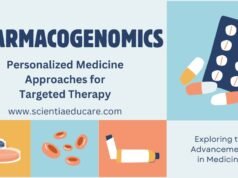Sustainable Animal Husbandry: Integrating Traditional Practices with Modern Techniques for Global Food Security
Introduction to Animal Husbandry
Animal husbandry refers to the science and art of raising livestock, including breeding, feeding, healthcare, and management. It plays a pivotal role in meeting global food demands, supporting rural economies, and promoting sustainable agricultural systems. This module explores innovative techniques, their significance, and the balance between traditional wisdom and modern advancements.
Relevant Link: FAO – Sustainable Livestock Practices
Animal Husbandry Techniques and Importance,
Best feeding practices for livestock,
Sustainable cattle farming techniques,
Low-cost poultry farming methods,
Goat farming for beginners,
Importance of animal husbandry in agriculture
The Importance of Animal Husbandry
1. Economic Contributions
- Provides livelihoods for over 1.3 billion people globally (World Bank).
- Generates income through meat, dairy, wool, and by-products.
- Fuels agro-industries (e.g., leather, fertilizers).
2. Nutritional Security
- Supplies high-quality protein (meat, eggs, milk).
- Addresses malnutrition in developing nations.
3. Environmental Stewardship
- Manure enhances soil fertility, reducing synthetic fertilizer use.
- Integrated farming systems minimize waste.
4. Cultural Significance
- Livestock rearing is integral to traditions and festivals worldwide.
Relevant Link: World Bank – Livestock & Development
Core Techniques in Animal Husbandry
1. Breeding Techniques
- Selective Breeding: Enhancing desirable traits (e.g., milk yield, disease resistance).
- Artificial Insemination (AI): Improves genetic quality; reduces disease transmission.
- Crossbreeding: Combines traits of two breeds (e.g., hardy indigenous × high-yield exotic).
- Genomics: DNA-based selection for precision breeding.
Relevant Link: NCBI – Advances in Livestock Genomics
2. Nutrition Management
- Balanced Diets: Customized feed for growth, lactation, or reproduction.
- Silage & Fodder Preservation: Ensures year-round feed availability.
- Supplementation: Minerals (calcium, phosphorus) and vitamins.
3. Healthcare & Disease Prevention
- Vaccination Programs: Prevents outbreaks (e.g., foot-and-mouth disease).
- Parasite Control: Deworming and rotational grazing.
- Biosecurity Measures: Quarantine protocols, sanitized housing.
Relevant Link: OIE – Animal Health Standards
4. Housing & Welfare
- Ventilated Shelters: Reduces heat stress in poultry/cattle.
- Ethical Practices: Avoids overcrowding; provides clean water.
- Automated Systems: IoT-enabled climate control and feeding.
5. Waste Management
- Biogas Plants: Convert manure into renewable energy.
- Composting: Produces organic fertilizers.
Relevant Link: USDA – Animal Husbandry Guidelines
Traditional vs. Modern Animal Husbandry
| Aspect | Traditional | Modern |
|---|---|---|
| Breeding | Natural mating | AI, embryo transfer |
| Feeding | Grazing, crop residues | Processed feed, additives |
| Disease Control | Herbal remedies | Vaccines, antibiotics |
| Scale | Smallholder farms | Industrial/commercial farms |
Case Studies
1. New Zealand’s Dairy Revolution
- Adopted rotational grazing and precision farming to become a global dairy leader.
- Learn More: DairyNZ
2. India’s Poultry Growth
- Small-scale farmers use hybrid chickens and vertical integration for scalability.
- Learn More: National Dairy Development Board
Challenges in Animal Husbandry
- Climate Change: Heat stress, fodder scarcity.
- Antibiotic Resistance: Overuse in intensive systems.
- Ethical Concerns: Factory farming controversies.
- Economic Barriers: High-tech adoption costs for small farmers.
Relevant Link: WHO – Antibiotic Resistance in Agriculture
Future Trends
- Precision Livestock Farming: Sensors and AI for real-time monitoring.
- Lab-Grown Meat: Reducing environmental footprint.
- Climate-Resilient Breeds: Genetic engineering for drought tolerance.
Relevant Link: ScienceDirect – Future of Animal Husbandry
Conclusion
Animal husbandry bridges food security, economic growth, and ecological balance. By harmonizing time-tested practices with innovations like genomics and IoT, stakeholders can build resilient systems that benefit both humans and the planet.
Further Reading
- FAO – Livestock’s Long Shadow
- ILRI – Sustainable Livestock Systems
- Penn State Extension – Animal Science
#AnimalHusbandry #SustainableAgriculture #LivestockManagement #FoodSecurity #ModernFarming
Multiple-choice questions (MCQs) on Animal Husbandry: Techniques and Importance
1. What is the primary goal of animal husbandry?
A) Entertainment purposes
B) Increasing productivity and sustainability ✅
C) Reducing wildlife population
D) Replacing agriculture
Explanation: Animal husbandry focuses on breeding, rearing, and caring for livestock to enhance their productivity and sustainability.
2. Which of the following is a key technique in animal breeding?
A) Hybridization ✅
B) Deforestation
C) Erosion control
D) Genetic mutation
Explanation: Hybridization involves breeding animals of different genetic backgrounds to improve traits like productivity and disease resistance.
3. Which of these is NOT a part of animal husbandry?
A) Dairy farming
B) Poultry farming
C) Crop cultivation ✅
D) Apiculture
Explanation: Crop cultivation is part of agriculture, while dairy farming, poultry farming, and apiculture (beekeeping) fall under animal husbandry.
4. Which animal is primarily reared for wool production?
A) Cows
B) Goats
C) Sheep ✅
D) Pigs
Explanation: Sheep are commonly raised for wool, which is used in textiles.
5. What is artificial insemination in animal husbandry?
A) Natural mating
B) Surgical implantation of embryos
C) Manual introduction of semen into the female reproductive tract ✅
D) Genetic engineering
Explanation: Artificial insemination improves breeding efficiency by introducing semen without natural mating.
6. What is the main benefit of crossbreeding in livestock?
A) Lower milk production
B) Increased disease resistance ✅
C) Weaker offspring
D) Reduced lifespan
Explanation: Crossbreeding enhances genetic diversity, making animals healthier and more productive.
7. Which of these is a common disease in cattle?
A) Swine fever
B) Foot-and-mouth disease ✅
C) Newcastle disease
D) Avian influenza
Explanation: Foot-and-mouth disease affects cattle, causing fever and sores, leading to decreased productivity.
8. Which species is commonly raised in poultry farming?
A) Sheep
B) Chickens ✅
C) Cows
D) Horses
Explanation: Poultry farming mainly involves raising chickens for eggs and meat.
9. What is the primary purpose of dairy farming?
A) Meat production
B) Egg production
C) Milk production ✅
D) Leather production
Explanation: Dairy farming focuses on milk production from animals like cows and buffaloes.
10. Which mineral is essential for strong bones in livestock?
A) Iron
B) Calcium ✅
C) Sodium
D) Sulfur
Explanation: Calcium is crucial for bone development and milk production in livestock.
11. Apiculture is related to which animal?
A) Sheep
B) Bees ✅
C) Horses
D) Ducks
Explanation: Apiculture is the practice of beekeeping for honey production.
12. Which of the following is a method of improving livestock breeds?
A) Inbreeding ✅
B) Deforestation
C) Overgrazing
D) Pollination
Explanation: Inbreeding involves mating animals within the same breed to maintain desired traits.
13. What is the term for feeding farm animals with a balanced diet?
A) Rationing ✅
B) Pollination
C) Hybridization
D) Germination
Explanation: Rationing ensures animals receive the necessary nutrients for growth and productivity.
14. Which of these is a high-yielding dairy cattle breed?
A) Jersey ✅
B) Bengal Tiger
C) Doberman
D) Arabian Horse
Explanation: The Jersey breed is known for producing high quantities of milk.
15. What is the process of removing wool from sheep called?
A) Shearing ✅
B) Pruning
C) Cropping
D) Harvesting
Explanation: Shearing is the practice of cutting wool from sheep for textile use.
16. Which disease affects poultry birds?
A) Rinderpest
B) Anthrax
C) Newcastle disease ✅
D) Rabies
Explanation: Newcastle disease is a viral infection affecting poultry, leading to respiratory and neurological symptoms.
17. Which of the following animals is used for plowing fields?
A) Elephant
B) Buffalo ✅
C) Cat
D) Dog
Explanation: Buffaloes are traditionally used in agriculture for plowing fields.
18. Which vitamin is essential for dairy cattle health?
A) Vitamin A ✅
B) Vitamin C
C) Vitamin D
D) Vitamin K
Explanation: Vitamin A helps maintain healthy vision, immune function, and reproduction in cattle.
19. Which technique is used to preserve fish for consumption?
A) Freezing ✅
B) Salting
C) Drying
D) All of the above
Explanation: Freezing, salting, and drying are all used to preserve fish.
20. Which of these is a common method of livestock disease control?
A) Vaccination ✅
B) Deforestation
C) Overfeeding
D) Isolation
Explanation: Vaccination helps prevent infectious diseases in livestock.
21. Which of the following is a ruminant animal?
A) Horse
B) Cow ✅
C) Pig
D) Rabbit
Explanation: Cows are ruminants, meaning they chew cud and have a specialized stomach for digestion.
22. Which of these is a major problem in overgrazing?
A) Soil erosion ✅
B) Water conservation
C) Increased vegetation
D) Forest growth
Explanation: Overgrazing depletes vegetation, leading to soil erosion.
23. Which animal is primarily used for leather production?
A) Sheep
B) Cattle ✅
C) Rabbits
D) Ducks
Explanation: Cattle hides are commonly used in leather production.
24. Which factor affects milk yield in dairy animals?
A) Nutrition ✅
B) Rainfall
C) Soil type
D) Air pollution
Explanation: Proper nutrition directly influences milk production in dairy animals.
25. What is the term for controlled breeding of animals?
A) Selection ✅
B) Harvesting
C) Germination
D) Grafting
Explanation: Selection ensures desirable traits in future generations.
26. Which of the following is a marine aquaculture species?
A) Salmon ✅
B) Chicken
C) Buffalo
D) Goat
Explanation: Salmon is commonly farmed in marine aquaculture.
27. Which hormone increases milk production in cattle?
A) Oxytocin ✅
B) Adrenaline
C) Insulin
D) Glucagon
Explanation: Oxytocin stimulates milk let-down during lactation.
28. Which is an eco-friendly animal farming method?
A) Organic farming ✅
B) Deforestation
C) Chemical feeding
D) Overgrazing
Explanation: Organic farming avoids harmful chemicals, benefiting animals and the environment.
29. Which of the following is a hybrid cattle breed?
A) Karan Swiss ✅
B) Labrador
C) Mustang
D) Persian Cat
Explanation: Karan Swiss is a crossbreed developed for higher milk production.
30. Which of these is an artificial breeding technique?
A) Artificial insemination ✅
B) Deforestation
C) Pollination
D) Hybridization
Explanation: Artificial insemination helps improve livestock genetics efficiently.
These questions will be useful for school boards, entrance exams, and competitive tests worldwide.














